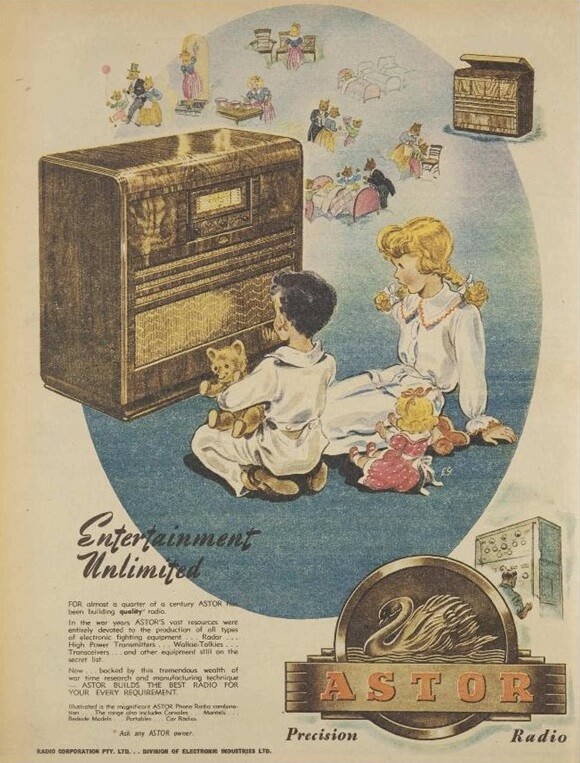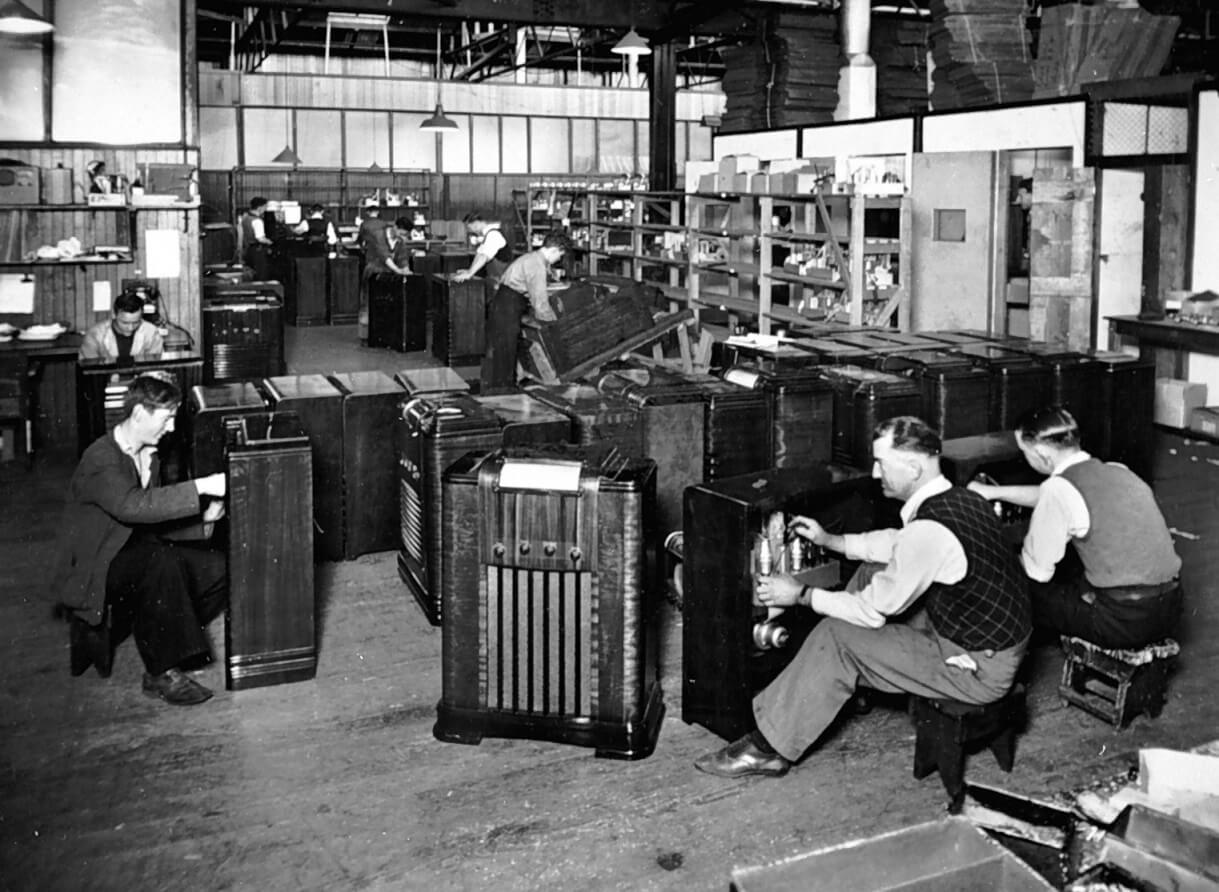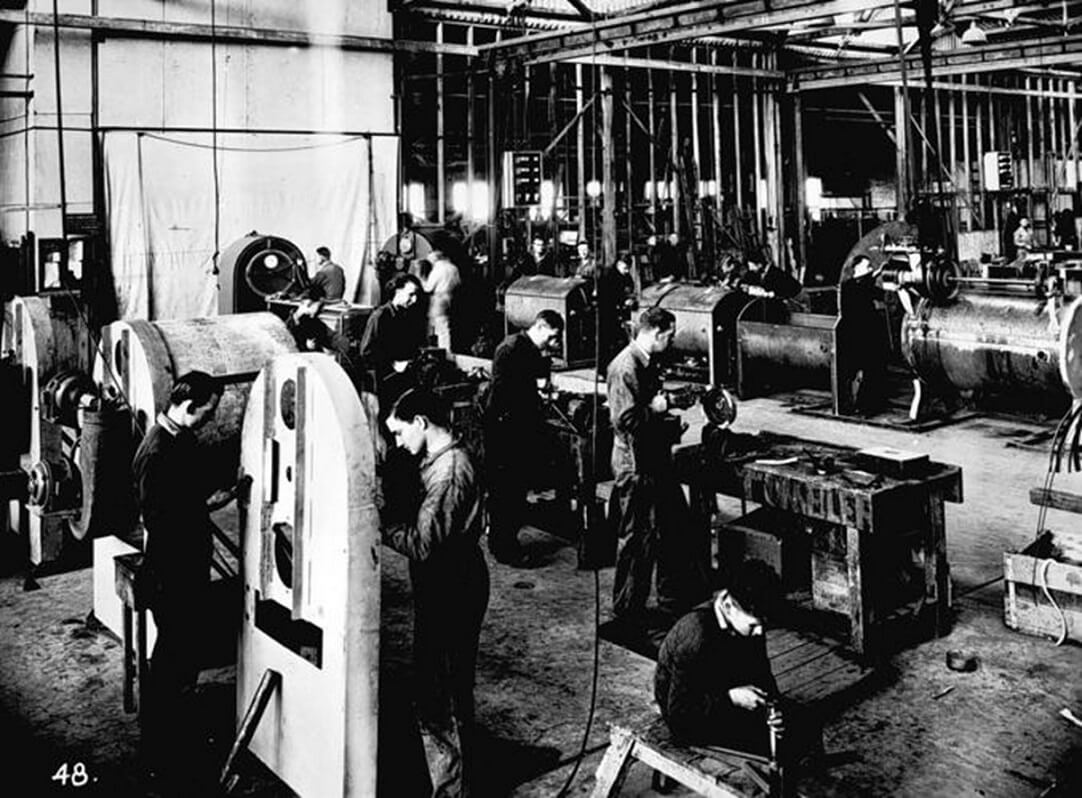Tariff protection and rising consumer demand helped drive the expansion of secondary industry after the war. There was a huge demand for housing, after a long lag in construction during the Depression and then the war. Demand for other household appliances was also strong, with new electric stoves, fridges, toasters, irons, vacuum cleaners and radiators all desirable consumer goods. With almost full employment and most workers in full-time work, these consumer goods were more within the reach of ordinary working Victorians.
One example was the radio. The wireless, so expensive when first introduced in the 1920s, became almost a necessity during the war, as Victorians listened anxiously for news each night, or relaxed listening to music, sport or popular comedy shows. Two hugely successful radio series were produced by the ABC during the 1940s — ‘The Lawsons’ (1944-49) and ‘Blue Hills’, which had a staggering 27-year run, from 1949-76. The ABC also created programs for children, which were immensely popular. They included ‘Kindergarten of the Air’, launched in 1943 to help compensate for the closure of kindergartens during the war. It ran until 1987, by which time television dominated children’s home entertainment. The other influential children’s program was ‘The Children’s Session’ including ‘The Argonauts Club’, which was first produced in 1933 in Melbourne, although it ran for only one year in this first iteration. It was revived in 1941, to run until 1972 and had a huge and loyal group of followers.
Entertainment Unlimited, Astor Precision Radio’, Australian Women’s Weekly, 22 December 1945
Reproduced courtesy National Library of Australia
The popularity of radio was helped by its increasing affordability. A six-valve wireless cost a whopping £90 in 1926, but two years later the price had fallen to £35 — admittedly still too expensive for most working families. By the 1930s a four-valve wireless cost as little as £13— about one month’s wages. The increasing popularity of hire purchase helped many to buy goods they could not afford in a single outlay.
Men inserting radios into cabinets at the Radiocorp factory, c.1934
Reproduced courtesy Museums Victoria
Equipping the home
Many other home appliances were manufactured locally, supported by import tariffs. Gas and electric stoves, refrigerators, washing machines and vacuum cleaners all found a ready market in post-war Australia.
Horscroft & Co manufactured washing machines. The disruption of trade during World War II helped local manufacturers and a white goods industry further expanded after the war, protected by import tariffs.



